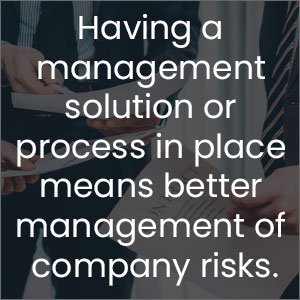To state that contracts are the lifeblood of all medium and large-sized companies – is not revolutionary. All companies need contractual agreements with their vendors, suppliers, channel partners, consultants, customers, and even employees. In fact, “the average Fortune 1000 company has between 20,000 and 40,000 active contracts,” according to the US National Association of Purchasing Managers.
Certainly, with such a tremendous volume of agreements, there is no doubt there is a clear need for standardized contracting processes – in other words, there is a need for contract management.
DEFINING CONTRACT MANAGEMENT
Part of any contract management 101 discussion is the need for a series of definitions. Taken from the Contract Management 101 Guide briefly, we define the management process as:
Contract management is the process of managing contract creation, execution, and analysis to maximize the operational performance of your business and to reduce financial risk.
After all, with 20,000 – 40,000 active contracts, having a management system for all those terms and conditions – is a fundamental starting point. Contract management helps maximize your business operations and reduce financial risk.
CORE ELEMENTS
Key parts in the business discipline of contracts include:
- Authoring
- Negotiating
- Baseline Management
- Commitment Management
- Contract Visibility
- Document Management
- Growth & Evolution (for sales-sided contracts)
- Compliance and Governance
These elements are touched on in the Contracts Management 101 Guide and addressed in other ContractPodAi posts.
EFFECTIVE CONTRACT MANAGEMENT 101
A fundamental contract management 101 lessons is the need for risk management. Having a management solution, or process in place means better management of your company risks. Whether or not your organization uses contract management software (CMS), there are four important steps to establish your agreement processes. They are:
- Plan
- Train
- Measure
- Audit
PLANNING
First, you must create a plan. Your first phase might simply be to get your manual process, or excel files organized. Perhaps centralize all contracts and elements into one place. Set out some basic management policies. This first phase may not include bringing on a contract lifecycle management system, but your next steps, or later stages need to consider it.
TRAINING
With a plan in place, train your associates. They need to know about how new processes impact existing and future agreements. Are there impacts on the contract terms, guidelines, or standard clauses? Are you stepping toward using more electronic signatures? Will you start a full digital transformation project for that matter? Will there be a contract relationship management practice?
Whatever your parameters or plan is, train your associates. Make sure they understand it. As a result, you will both get them better engaged in the new procedures, and ensure your new process is used.
Having a management solution or process in place means better management of company risks.
MEASUREMENT
Although labor-intensive, you need to measure your progress with the new processes. It is not a comfortable thing to do, but start looking at how many errors are made with new contracts. Look at the time taken to find and retrieve contracts for review. What percent of the time has your firm missed opportunities on contract auto-renewals? Did you catch them every single time, or are certain auto-renewals just happening?
AUDITING
Finally, go back and look at how often your new contract processes are being used. Are company staff adhering to the business processes regarding your new agreements? Are all your contracts centralized? Do you have a pulse on the contracts in your organization?
NEXT STEPS
Now, once you have the fundamentals of contract management 101 in play, you need to think of the future. So, what is your next step?
If you are still processing contracts manually or tracking them on an excel or word document – then it is high time for a change. Manual processes are prone to error, forgetfulness, and a lack of consistency. In addition, mid and large-sized companies have too many contracts in play to let these risks run unchecked.
In conclusion, your team needs to consider contract lifecycle management (CLM) technology. Not only does it relieve your contracts burden, but it is also an important part of your company’s risk management process. Ask for a quick personal demo of one of the most robust systems. Check out our Contract Management Primer for more information on the fundamentals of contract management.










